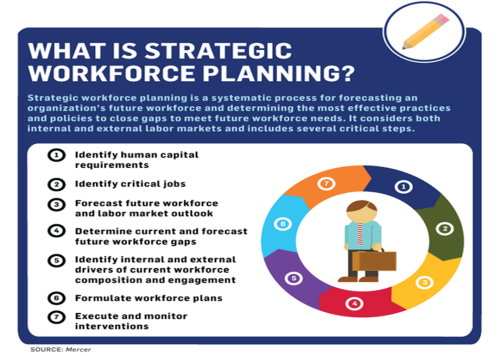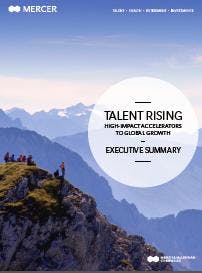Is talentism the new capitalism?
Klaus Schwab, Founder and Executive Chairman of the World Economic Forum, thinks so and said as much as he opened this year’s event in Davos.
Mercer chose this quote to open the executive summary of its new report, Talent Rising: High-impact Accelerators to Global Growth. It includes some great survey data from more than 1,250 HR and talent management executives in 65 countries around the world. It also includes important and useful data about how organizations are or are not expanding their definition of capital to include talent.
Human capital: the main determinant of today’s success
Forever, it seems, organizations’ primary sources of value and competitive advantage have been financial in nature: money, land, buildings and machines – all the values carried on the balance sheet. Mercer’s observation is that with human capital being the main determinant of success today, it is troubling that so many organizations leave the development of their talent “largely to external systems and forces, with resulting gaps in their talent portfolios.”
(One could also argue that if, indeed, human capital is the main determinant of organization success today, then there should be an entry on the balance sheet to capture its importance. But that’s for another day.)
This report is a huge call to action – not just for HR, but for the entire C-suite. And it is a great road map for HR to initiate the discussion of talent as capital.
Central to this discussion is the definition of strategic workforce planning. We hear about this all the time. And BCG, funded by the World Federation of Personnel Management Associations together with SHRM, has observed that there is low capability worldwide in strategic workforce planning. Perhaps that’s because we know it when we see it, but we can’t really define it.
When will human capital be part of the balance sheet?
Mercer’s done a great job of defining strategic workforce planning and published a great infographic along with the Talent Rising executive summary.
This seven step virtuous circle seems simple enough, but I think we all know that sometimes the most simple things are the hardest to achieve. And that certainly would be true for strategic workforce planning. Identifying accelerators on which to focus might help organizations begin to break the process down into manageable chunks. Just knowing where to begin will undoubtedly help some make progress.
“Talentism is the new capitalism.” Well, maybe in 5-10 years — when HR is seen as a business function and not an overhead function. And, when human capital is valued on the balance sheet.
We can dream, can’t we?
This originally appeared on China Gorman’s blog at ChinaGorman.com.
